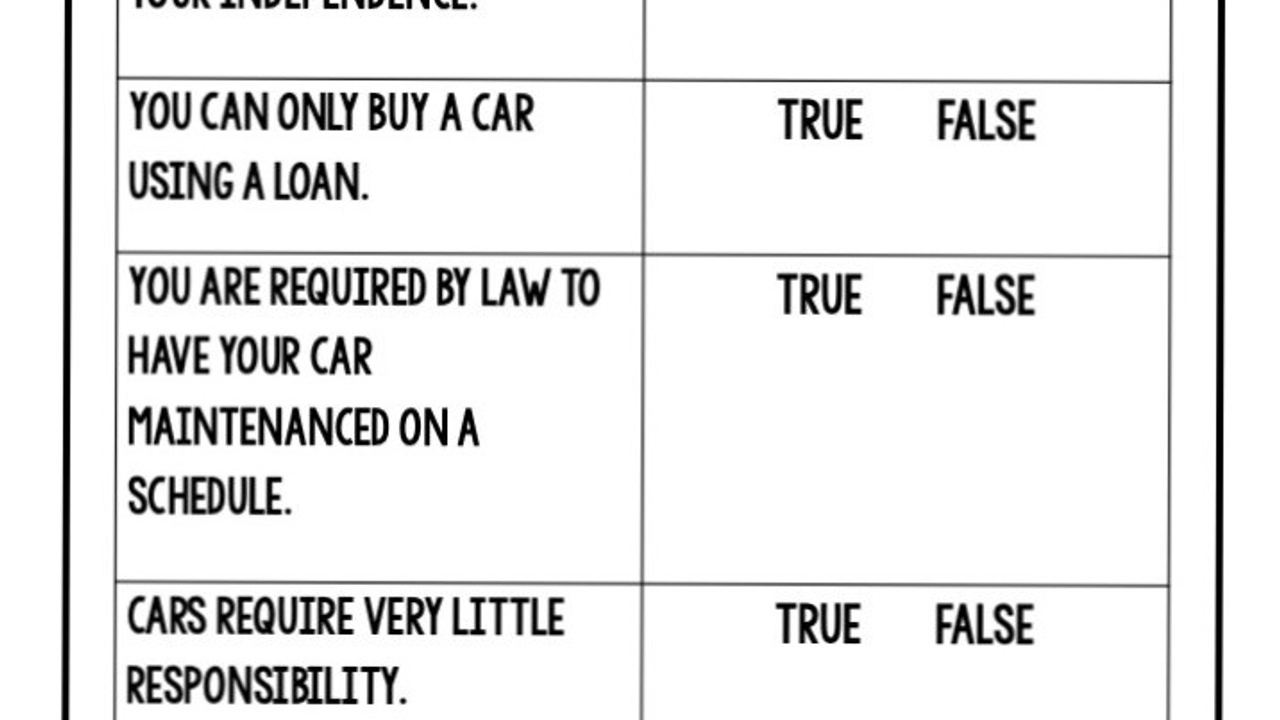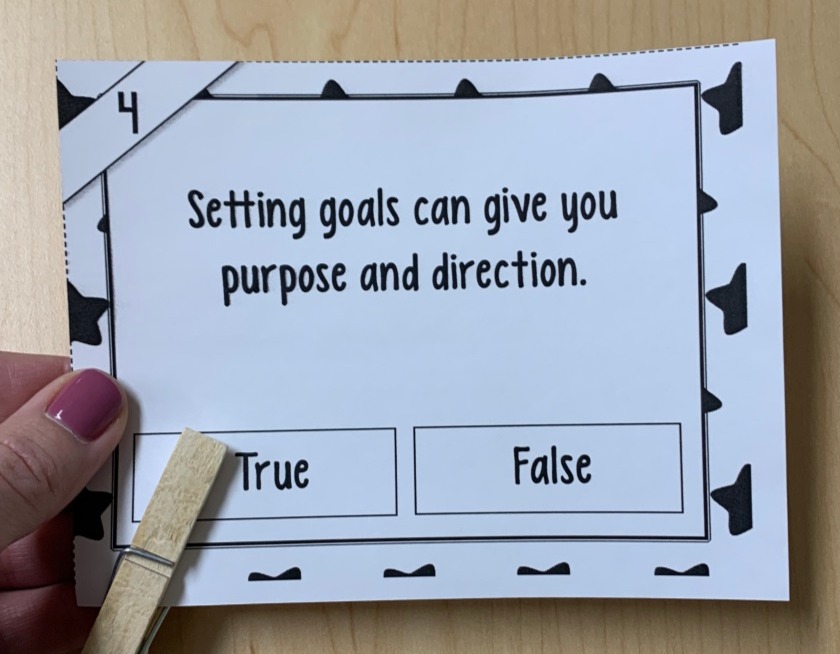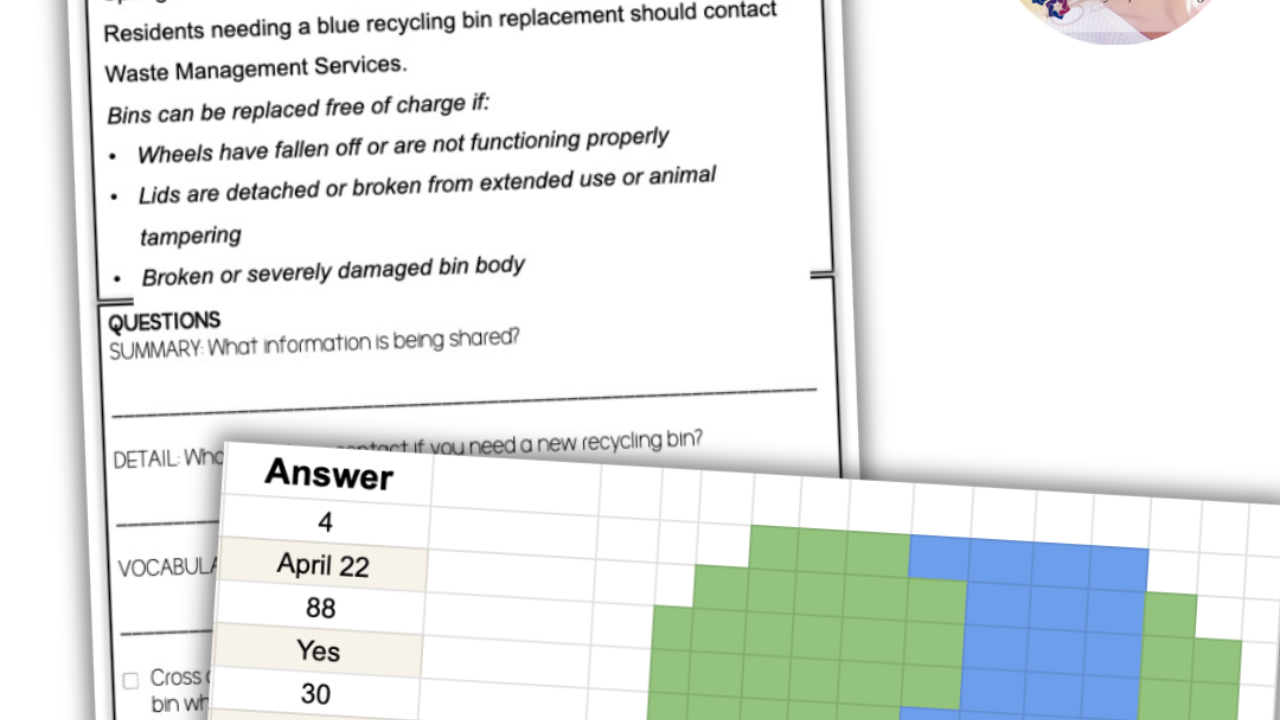Is this Consumer Math Curriculum right for you and your students?
Jun 16, 2020
Let me take you back to a time before the Consumer Math curriculum existed. I was assigned to teach a ‘brand new’ class back in the day called Math 2 (yes, very specific) and was given little to no guidance on what to cover(i.e., no student book, no curriculum map, no course objectives). I knew the class was going to be the next offering in the self-contained consumer math courses sequence and was intended for 10th-12th high schoolers. While I didn’t appreciate the autonomy at the start, I grew to embrace the authority I had to teach what I thought was important for every high school student to learn.
I didn’t use the term ‘consumer math’ for a few years, it was ‘real life’ math to me. I assumed that if I had to figure out the ‘mathematical concepts’ between graduating from my high school math class and now (I was still a young adult teacher at the time), then it was a topic my students would use in their adult life and was worthy of being included in the scope and sequence.
After some googling and such, I realized I could call the class concepts Consumer math or Financial Literacy. Since Financial Literacy seemed too abstract for my students, I decided on Consumer Math. Consumer, which all my students were, spoke to the types of skills for financial success I wanted them to experience- budgeting, shopping, renting, etc.
Boom! The Consumer Math Curriculum began to take shape! Click here to grab your Consumer Math Curriculum Bundle!
What You Get In The Curriculum
-
Teacher created AND classroom tested curriculum
-
25 lesson units ranging between 4-5 days for each lesson unit
-
Pre/post tests
- Answer keys
-
Suggested teaching calendar (scope and sequence)
-
Materials with appropriate high school age visuals/font/colors (which I know is like the elusive loch ness monster)
Target Audience
The high school math curriculum was initially developed for special needs high school students age (10th-12 grade students) self-contained consumer math course. However, meaningful, real world, and practical financial literacy applications of math are important for a much wider range of students. You know, everyday financial decision-making skills, like money management skills to shop at grocery stores, understand net pay vs gross pay, and make smart financial decisions.
Teaching everyday life skills and daily life math concepts to transition and high school level students means the materials must be respectful of their age, engaging because boredom comes easily, and a variety of topics that's immediately applicable. If you're curious if this curriculum would be appropriate for younger students, specifically middle school, just read the reviews on TeachersPayTeachers, and you'll see it's been a good fit!
Ideally, students would possess basic computer and internet skills and the teacher would have a computer they can ink/write on (but not required) while projecting to a screen.
I knew that I thrived on consistency and routine and that my students would also benefit from knowing what each lesson would bring. Each Monday would look relatively similar, as would Tuesdays and Wednesdays. I structured the lesson units to last one week, with some weeks being 4 days long for holidays/conferences. I TRIED to organize the concepts in the best way so that the lesson units that naturally required less time to cover would land on the shorter weeks.
Structure
Like many many curriculums, this curruciulum structures the math classes with a 4 or 5 day routine format. Each unit lesson has a Cover page so you can copy the notes and other materials and staple, 3-hole punch, and organize them in a binder. Since you won’t need a standard textbook (yes, I can hear the administrators smile as I type that), a binder will be a great place to collect all the paper files. Most 5 day lessons look like this:
Day 1- Introduce
-
Cover page includes the learning objective and brain teaser
-
Reading comprehension passage (approximately 1 page narrative explaining the topic)
-
True False 5 question reading check student worksheets
-
4 short response writing prompts
Day 2- Overview
-
General Notes (2 versions- open and guided)
-
Delve into the concept-Parts worksheet (more detailed notes page that incorporates visuals and examples)
-
Opportunity to share real artifacts (bills, coupons, etc.
Day 3- Guided Practice
-
Concept-appropriate activity with enough structure to support students as they first begin to apply their new knowledge
Day 4- Independent Work Application
-
Concept-appropriate activity that pushes students to use their newly acquired knowledge in real-life examples
Day 5- Review & Assess
-
16 task cards for review
-
5 question formal assessment
-
6 question functional math worksheet
-
Vocabulary term word search (can also be used as homework BEFORE the lesson unit begins)
Math Skills Covered
-
Dollars and Coins
-
Monthly Food (get the Monthly Food Budget Boom Card deck to try for FREE!
-
Paying Bills
Click here to grab your Consumer Math Curriculum Bundle!
What's Included in Each Lesson Unit:
- Four or Five day lesson plans teacher guide
- Topic flow chart
- Brain teaser
- Student notes cover page
- 1 page reading passage
- Comprehension questions
- Writing prompt to activate prior knowledge
- Two levels of notes (differentiated) + Google Slide deck
- A more specific notes page with visuals + Google Slide deck
- Quick example reference note
- Guided practice
- Two levels of assessment (differentiated)
- Word Search
- 16 Task Cards
- Functional Math 6 Question review
- Answer keys!!!
- Task Cards in Boom Cards format for student review and assessment!
- ***You can also grab the curriculum bundle with weekly downloadable workbook that covers essential consumer math skills
Should I Get The Curriculum + Projects?
Think of the Projects as an end of quarter exercise where students practice applying the skills they have learned.
The Projects are structured, come in two different levels that can be intermixed as students need, and customizable for each student, thus making it cheat-proof! Since each skill is assessed on a points basis, you are able to assess the student at the level they are at.
No, the Projects are not designed to be group projects, so each student is required to show you exactly what they know, have learned, and can find in their resources.
The Projects are a great test of how well students can use their resources (hello, executive functioning). Are their notes organized? Do they know where to find the answer they need? Can they generalize their learning to specific, personal (albeit hypothetical) situations?
This Is Right For You IF...
-
For special education teachers who want a consistent structure for themselves and their students
-
Daily lessons to span an entire school year
-
Age-appropriate visuals and streamlined lesson plans and worksheets
-
Activities for your students to apply their skills, not just regurgitate them
-
Predictable lesson units that are versatile enough to keep class fun and exciting (look for blog entries starting August 2020 for an in depth review of each lesson unit and ideas for making it unique and special in your classroom)
This Curriculum Is Not For You IF...
-
Transition Plan: All (or the large majority) of your students are 4 year degree college bound students
-
Academic Skills: The class reading average is at or above 9th grade level
Read my latest blog posts about each topic!
Still not sure if this consumer math curriculum is appropriate for you and your students, whether in a school setting or for homeschool families, email me! I’m happy to chat about the format and foundational math skills that are addressed in both this curriculum and the Functional Math Curriculum! Send inquiries to [email protected] and I'll help you decide if this personal finance curriculum will become your new favorite resource!























